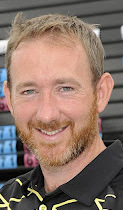
These are turbulent times for golf clubs across the country and, amid the myriad economic challenges brought on by dwindling memberships, the threat of court action has added another layer of menace.
Earlier this month, appeal court judges announced that the Niddry Castle club in West Lothian would have to pay a substantially higher proportion of damages than had been originally ruled after a golfer lost an eye when he was hit by a ball in 2007.
The club were ordered to pay 30% of the £400,000 claim because of a lack of warning signs on the course, after Anthony Phee was struck by James Gordon's tee shot.
However, the later ruling said the club were responsible for the "lion's share of blame" and ordered Niddry Castle to pay 80% of the total damages, nearly £320,000, with Gordon and his insurers picking up the rest.
The club were ordered to pay 30% of the £400,000 claim because of a lack of warning signs on the course, after Anthony Phee was struck by James Gordon's tee shot.
However, the later ruling said the club were responsible for the "lion's share of blame" and ordered Niddry Castle to pay 80% of the total damages, nearly £320,000, with Gordon and his insurers picking up the rest.
The case has made club secretaries across the country sit up and take notice and Garry Ferguson, a partner in the Glasgow-based legal firm BTO solicitors, urged clubs to take swift action in these increasingly fraught times of "risk assessment".
Whether we get to a point when we're all handed a hard hat and goggles along with our scorecard and some complimentary tees by the starter on the first remains to be seen.
However, there is no denying legal procedures involving incidents on the golf course are on the rise. Gavin Dear, the former Walker Cup player, was hauled to court recently to contest a case in which a ball spotter was seeking £50,000 in damages. He lost sight in one eye after being struck by Dear's ball during an amateur event in 2009.
Editor's note: The judge has yet to deliver his ruling on that case.
"These types of cases are becoming more common. It's the society we live in now and the way legislation is drafted," Ferguson said. "If you don't advise people of the risks then you are exposing yourself to potential claims.
"In the Niddry Castle case, the club were found liable as occupiers of the course and occupiers owe a duty of care to anyone entering on to the premises.
"If there was a sign saying you could be hit by a ball then that would have drawn it to the attention of the players and if they had carried on and taken that risk then it was down to them. Insurers will be looking at this very closely now.
"When it comes to renewal policies, they will asking clubs 'have you done this and that?' in relation to risk assessment. It could have a huge impact on the premiums."
Ferguson says decisive and relatively straightforward action from clubs now could save them considerable anguish down the line.
"In theory, it sounds onerous but in reality it's probably not," he said. "The courts are not saying don't play, they are saying look at the extent of the risk and whether it can be reduced.
"Where are the risky bits? Where do you walk from one hole to the next? If there is a risk, stick a sign there and in the court's view that would probably be enough."









